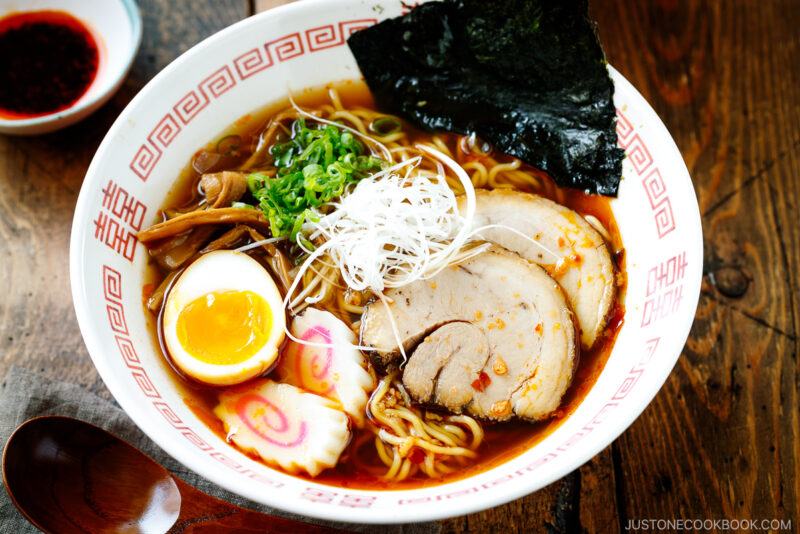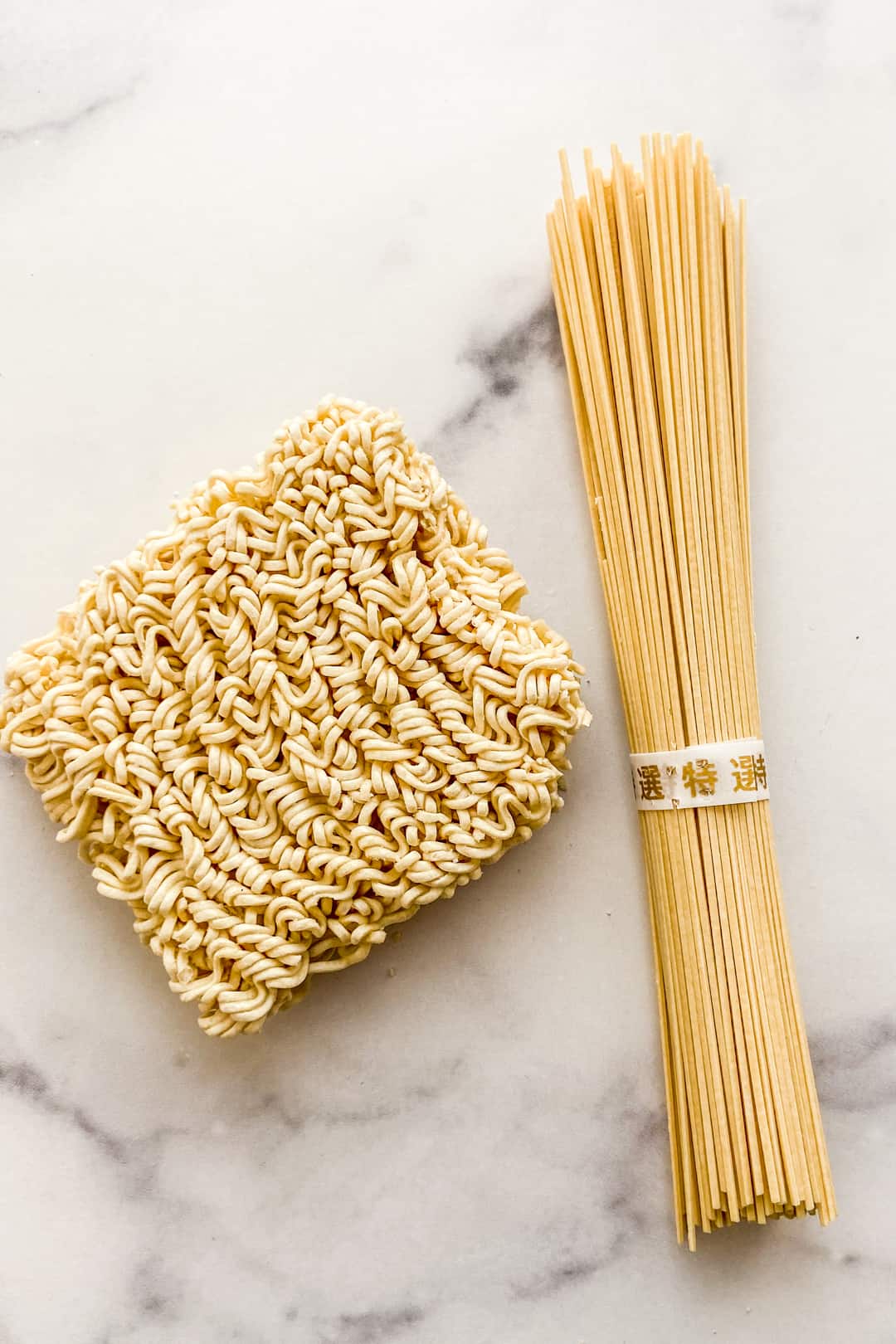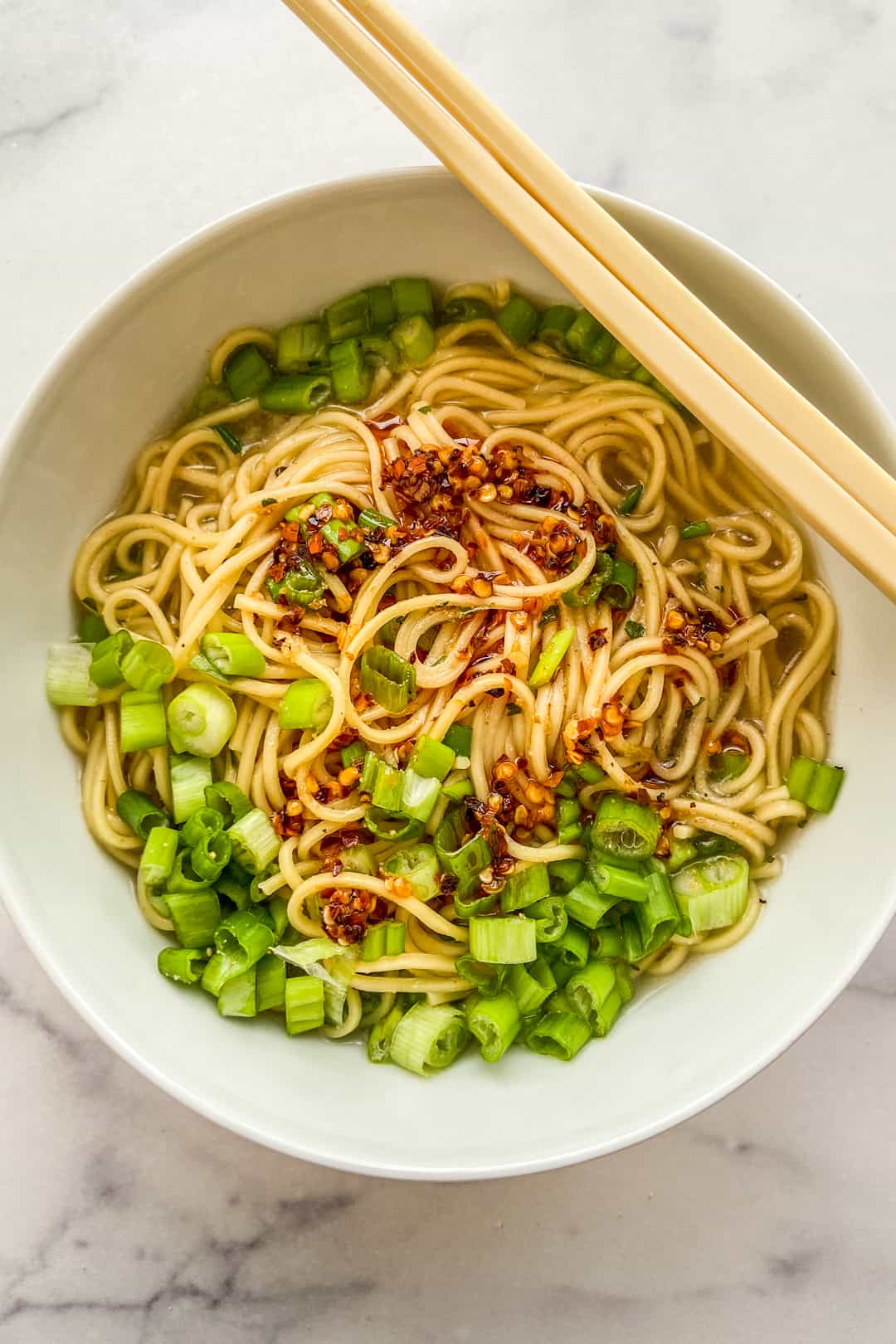This ramen seasoning mix is easy to make and tastes great! This recipe makes 4 servings, with about 1 tablespoon of seasoning in each.
Its perfect if you want to make a bowl of homemade ramen or want to make instant ramen but dont want all the preservatives in the ramen seasoning packet.
You can also use these ramen spices on snack mixes, as a rub on meat, or to top roasted vegetables. Its a great savory spice blend!.
It’s great that this ramen spice mix can be used in more than just soup. It can help you make a healthier bowl of ramen.
Ramen seasoning packets often come with a significant amount of sodium and preservatives, which is fine in moderation. But it’s great to be able to choose what goes into the spice blend if you want to make ramen often or for kids.
You might also want to use dried (not fried) ramen noodles, and youll need to serve those with some seasoning – hence this great blend! You can also use it in some of our favorite ramen recipes, like our ramen with egg and kewpie, ramen with milk, or miso ramen.
Additionally, you can use ramen spices on all sorts of things! I love ramen seasoning on a mix of spiced nuts or roasted chickpeas, as a rub on chicken, and to top roasted carrots or Brussels sprouts.
If youd like to like your ramen on the spicier side, add ¼ to ½ teaspoon of cayenne to this blend.
Ramen noodles are a beloved staple in many households. The savory chicken flavor that comes from those little seasoning packets is a huge part of ramen’s appeal. But have you ever wondered exactly what goes into making that lip-smacking chicken taste?
In this guide, we’ll break down the key ingredients typically found in chicken ramen seasoning mixes and unpack how each one contributes to the overall flavor profile.
The Foundation: Salt and Umami Boosters
Salt is the cornerstone of any ramen seasoning blend. It makes food taste better, keeps it from going too sweet or too sour, and keeps it fresh. Chicken ramen packets can have up to 200% more salt than the recommended amount! Table salt and sea salt are commonly used.
Monosodium glutamate (MSG) is another foundational ingredient. This controversial flavor enhancer imparts a strong umami or savory taste. While some people are sensitive to MSG, it is generally recognized as safe in moderation.
Nucleotides like disodium inosinate and disodium guanylate work with MSG to make umami even stronger. They are common in many ramen seasoning blends.
Dehydrated Vegetables for Depth
A blend of dried veggie powders creates aromatic background notes and complexity. Onion, garlic, carrot, and celery are typical choices. Their subtle sweetness offsets the saltiness. Finely milled powders ensure fast, even distribution and rehydration when boiling ramen.
Chicken Flavor: The Star of the Show
Chicken fat or chicken flavoring (natural or artificial) is essential for mimicking that mouthwatering chicken taste. Chicken fat powder contributes a rich, fatty mouthfeel and authentic flavor Artificial chicken flavoring aims to copy the taste profile
Hydrolyzed vegetable protein (HVP) is another source of savory chicken notes. It is produced by breaking down soy, corn, or wheat proteins into free amino acids and nucleotides.
The Spice Rack for Warmth and Complexity
The specific blend varies, but popular spices include turmeric, white pepper, black pepper, paprika, ginger, and more. Turmeric lends an earthy quality and golden color. Peppers provide a warming heat. Ginger adds bright, gingery aromatics. These spices make the seasoning more complex.
Sweeteners for Balance
Small amounts of sugars like dextrose or maltodextrin are often added to balance against the salt and umami. They contribute sweetness, improve mouthfeel, and prevent an overly salty sensation.
Don’t Forget the Additives!
Like any packaged food, ramen seasoning contains additives for appearance and shelf stability. Silicon dioxide prevents caking, while artificial colors like yellow #5 provide visual appeal. Preservatives ensure a long shelf life.
At first glance, chicken ramen seasoning may look like a simple mix of spices, but it’s actually made up of dozens of different ingredients that work together to give it that famously savory taste. When you eat noodles the next time, take a moment to appreciate the skill that went into making that little salty powder.

How to Make Homemade Ramen
The easiest way to use this ramen seasoning mix is to make simple homemade ramen. Heres how to make 1 serving of it.
- In a small pot, heat up 2 cups of water.
- Put in your noodles. You can use either fried noodles from a package of instant ramen or dried ramen noodles. Boil according to package directions, usually 3 minutes.
- Put the noodles away from the heat and add one tablespoon of your own ramen seasoning mix. Stir to combine.
- In a bowl, put the ramen. Add ⅓ cup of chopped scallions, chili oil, and/or a teaspoon of sesame seeds on top.



Viral Cooking! (Ramen Noodle hack!) #shorts
FAQ
How to recreate ramen chicken seasoning?
ingredients2 tablespoons onion powder. 2 tablespoons garlic powder. 2 poultry seasoning. 2 tablespoons black pepper. 1 chicken, flavored bouilion cube crushed into powder.
What are the ingredients in top ramen chicken flavor?
Enriched flour (wheat flour, niacin, reduced iron, thiamine mononitrate, riboflavin, folic acid), palm oil, salt, less than 2% of yeast extract that has been broken down naturally, citric acid, disodium glutamate, disodium inosinate, disodium succinate, dried leek flake, egg white, garlic powder, hydrolyzed corn protein, hydrolyzed soy protein,
What to use instead of ramen seasoning packet?
Instructions:Place the kombu, dried shiitake, dried shrimp, and freeze-dried scallions in a spice grinder. Put the ground meat, soy sauce powder, onion powder, garlic powder, ginger powder, sea salt, and sugar in a container. Close the container and shake for 1 minute to mix everything evenly.
What ingredients are in chicken ramen?
Nutrition2 skinless chicken breasts. 2 handfuls of stir-fry vegetables. (about 200g)200g ramen noodles. 1 egg. 500ml chicken ramen broth. finely chopped chives. to serve. chilli flakes. to serve.
